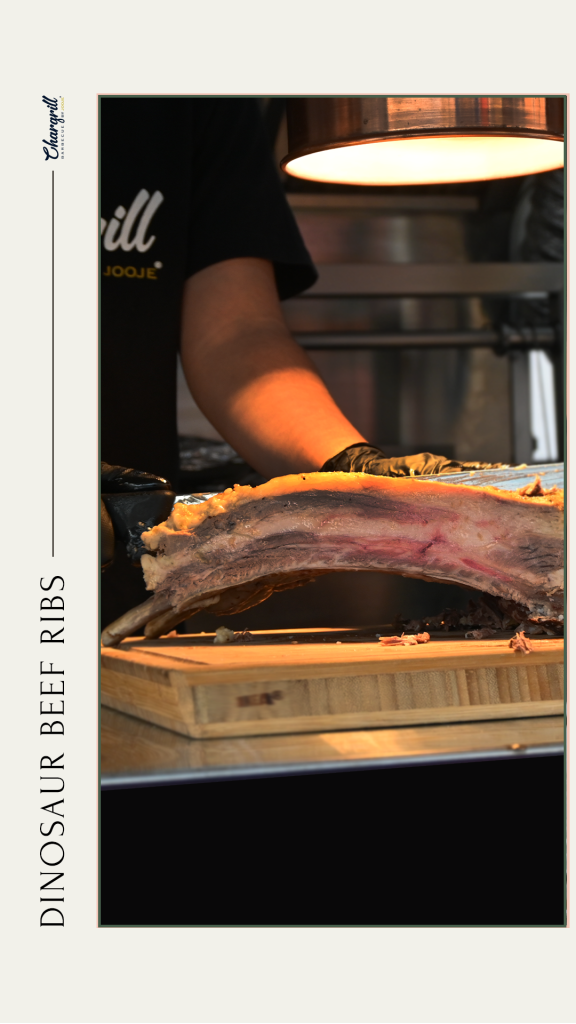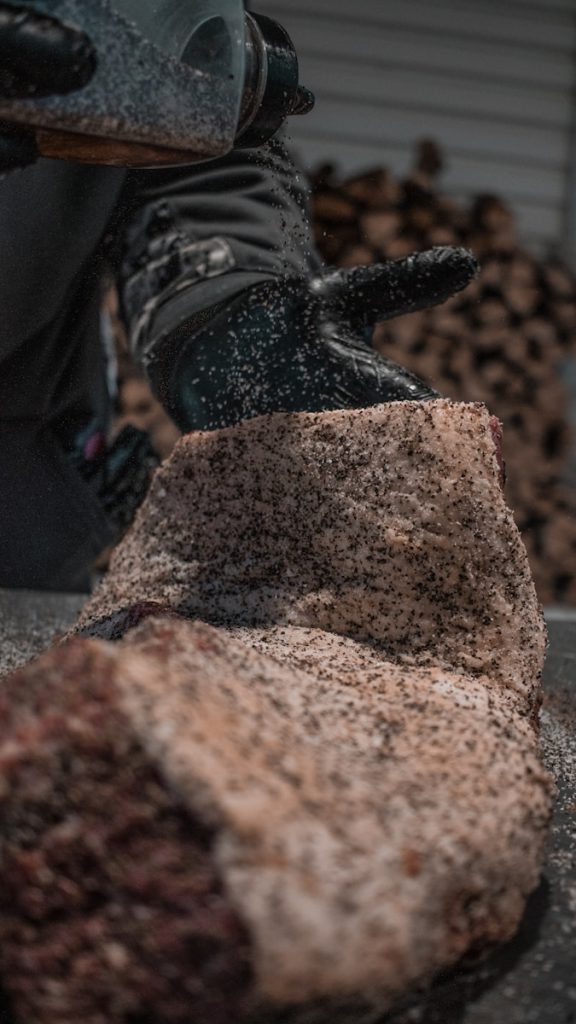BBQ catering is a popular choice for various events, providing delicious and flavorful bbq food that can please a wide range of guests. When planning BBQ catering, one important decision is whether to have the catering on-site or off-site. Each option has its advantages and disadvantages, which we’ll explore in detail.
Overview of BBQ Catering
BBQ catering involves providing grilled or smoked meats and other foods for events. It can range from casual backyard gatherings to formal corporate events or weddings. BBQ catering can be tailored to meet specific needs, including dietary preferences and theme requirements.
On-site BBQ Catering
On-site BBQ catering means that the food is cooked and prepared at the event location. This option provides a unique and interactive experience for guests, allowing them to see and smell the food being cooked, which can enhance the overall atmosphere of the event.
Pros of On-site BBQ Catering
- Freshness and Quality: Cooking on-site ensures that the food is fresh and hot when served, maintaining the highest quality and flavor.
- Interactive Experience: Guests can watch the cooking process, interact with the chefs, and enjoy the aromas, adding to the excitement and enjoyment of the event.
- Customization: On-site catering allows for real-time customization of dishes to meet guests’ preferences or dietary restrictions.
- Ambiance: The presence of BBQ grills and smokers can create a rustic and authentic atmosphere, enhancing the overall theme of the event.
- Flexibility: Any last-minute changes or special requests can be accommodated more easily when the food is prepared on-site.
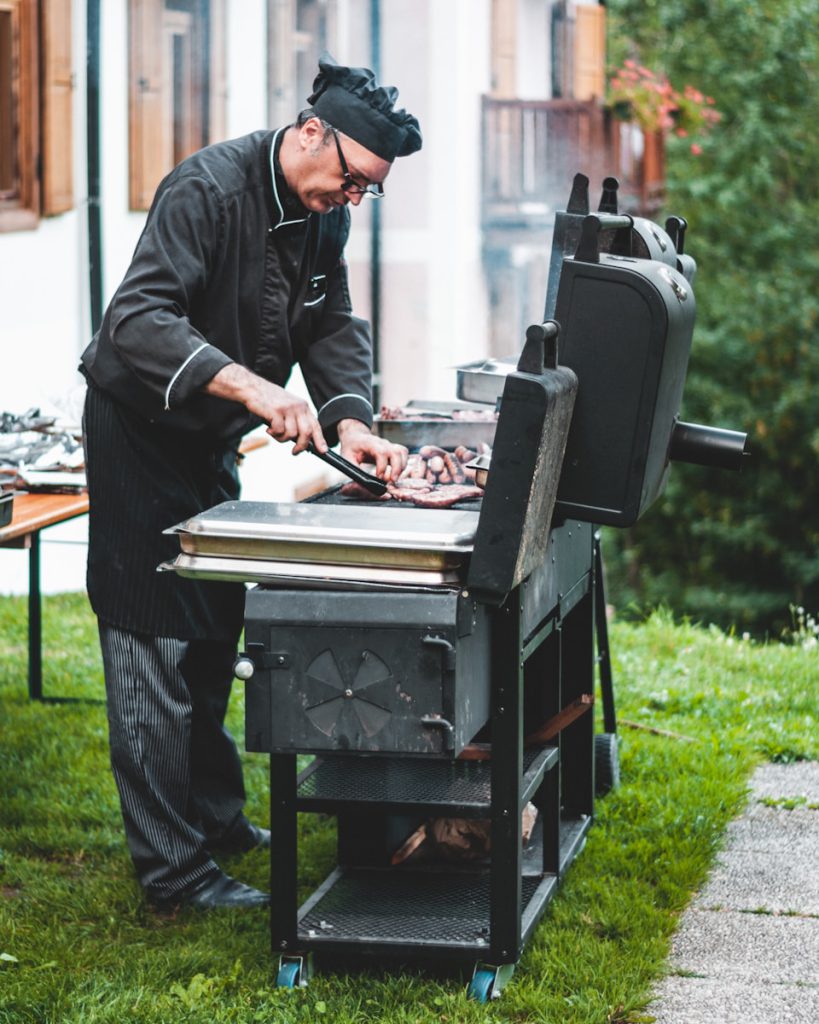
Cons of On-site BBQ Catering
- Logistics and Setup: Setting up BBQ equipment on-site can be challenging, requiring space, power sources, and proper ventilation.
- Weather Dependence: Outdoor cooking is subject to weather conditions, which can be unpredictable and potentially disrupt the event.
- Space Requirements: On-site catering needs adequate space for cooking equipment and serving areas, which might be limited in some venues.
- Permits and Regulations: Complying with local health and safety regulations can be more complex when cooking on-site.
- Cleanup: On-site cooking can generate more mess, requiring thorough cleanup after the event.
Off-site BBQ Catering
Off-site BBQ catering involves preparing the food at a separate location and transporting it to the event. This option can be more convenient for certain venues and events, offering a different set of advantages.
Pros of Off-site BBQ Catering
- Convenience: Food is prepared in a controlled environment, reducing the need for extensive setup and cleanup at the event site.
- Consistency: Off-site preparation can ensure consistent quality and taste, as the food is cooked in a professional kitchen with optimal conditions.
- Weather Independence: Off-site catering is not affected by weather conditions, providing peace of mind regardless of the forecast.
- Space Efficiency: It eliminates the need for large cooking equipment on-site, freeing up space for other event activities.
- Simplified Logistics: Transportation and setup are handled by the catering team, reducing the burden on event organizers.
Cons of Off-site BBQ Catering
- Potential Quality Loss: Food may lose some freshness and temperature during transportation, potentially affecting its quality.
- Limited Customization: Customization options are more limited compared to on-site cooking, as the food is pre-prepared.
- Reheating Requirements: Some dishes may need to be reheated upon arrival, which can impact their texture and taste.
- Reduced Interaction: Guests miss out on the interactive experience of watching the food being cooked and engaging with the chefs.
- Timing Challenges: Ensuring the food arrives on time and at the right temperature requires precise coordination and planning.
Comparing On-site and Off-site BBQ Catering
Both on-site and off-site BBQ catering have their unique benefits and drawbacks. The choice between the two depends on various factors, including the nature of the event, venue constraints, budget, and guest preferences.
Key Factors to Consider
- Event Size and Type: Larger events may benefit from off-site catering to manage logistics more efficiently, while smaller, more intimate gatherings might enjoy the interactive aspect of on-site catering.
- Venue Facilities: The available space, power supply, and ventilation at the venue can influence the feasibility of on-site catering.
- Guest Experience: Consider whether guests would appreciate the interactive cooking experience or prefer the convenience of pre-prepared meals.
- Weather Conditions: For outdoor events, weather unpredictability can be a major consideration in choosing between on-site and off-site catering.
- Budget: On-site catering may involve higher costs due to equipment setup and staffing, while off-site catering can be more cost-effective but might require investment in quality transport solutions.
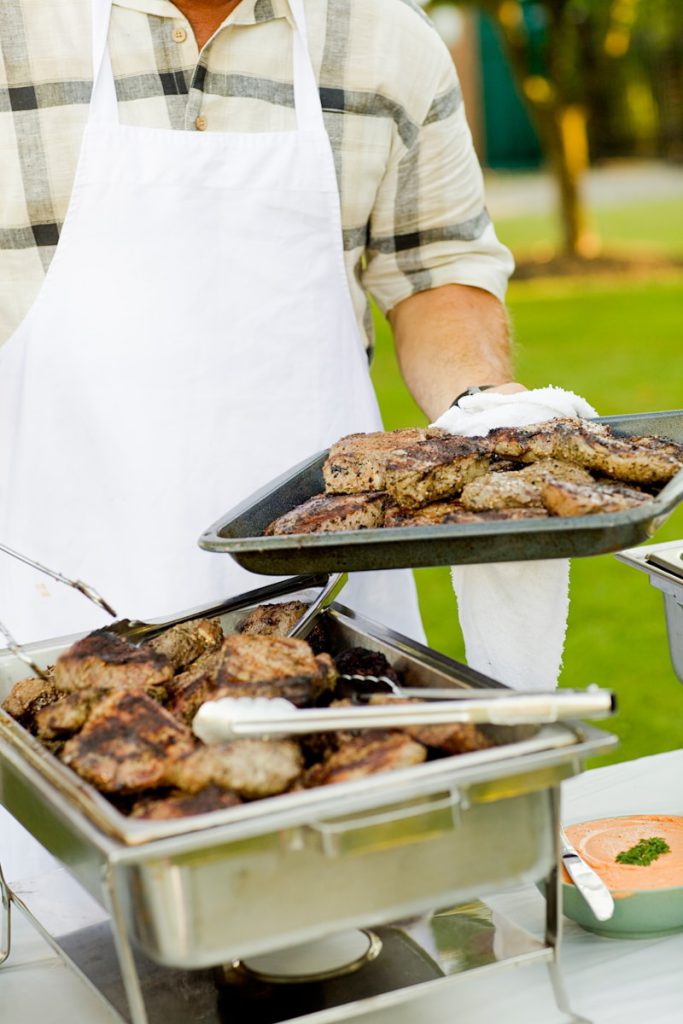
Customizing the BBQ Experience
Regardless of whether you choose on-site or off-site BBQ catering, there are various ways to customize the experience to meet your event’s specific needs.
- Classic BBQ: Offer traditional BBQ favorites such as smoked brisket, ribs, pulled pork, and sausages.
- Fusion BBQ: Incorporate elements from different cuisines, such as Korean BBQ or Mediterranean-inspired dishes.
- Vegetarian and Vegan Options: Provide grilled vegetables, plant-based proteins, and other vegetarian-friendly dishes.
- Interactive Stations: Set up stations where guests can customize their dishes with various sauces, sides, and toppings.
- Desserts: Include BBQ-inspired desserts like grilled fruit, s’mores, or BBQ-flavored ice cream.
Service Styles
- Buffet Style: Guests serve themselves from a selection of dishes, allowing them to choose their favorites.
- Family Style: Dishes are served on large platters for guests to share, creating a communal dining experience.
- Plated Service: Meals are individually plated and served to guests, offering a more formal dining experience.
- Food Truck: Utilize a food truck to serve BBQ dishes, adding a trendy and mobile element to the event.
Health and Safety Considerations
Both on-site and off-site BBQ catering must adhere to strict health and safety standards to ensure the well-being of guests.
On-site Catering
- Sanitation: Ensure all cooking and serving areas are kept clean and sanitized.
- Food Handling: Follow proper food handling procedures to prevent contamination.
- Temperature Control: Cook and store food at safe temperatures to prevent foodborne illnesses.
- Allergen Management: Clearly label dishes with potential allergens and provide alternatives for guests with dietary restrictions.
Off-site Catering
- Transportation: Use insulated containers and temperature-controlled vehicles to maintain food quality during transport.
- Reheating: Ensure reheating equipment is available and used properly to maintain safe serving temperatures.
- Food Storage: Store food in appropriate containers to prevent cross-contamination.
- Packaging: Use eco-friendly packaging to minimize environmental impact and provide convenient serving options for guests.
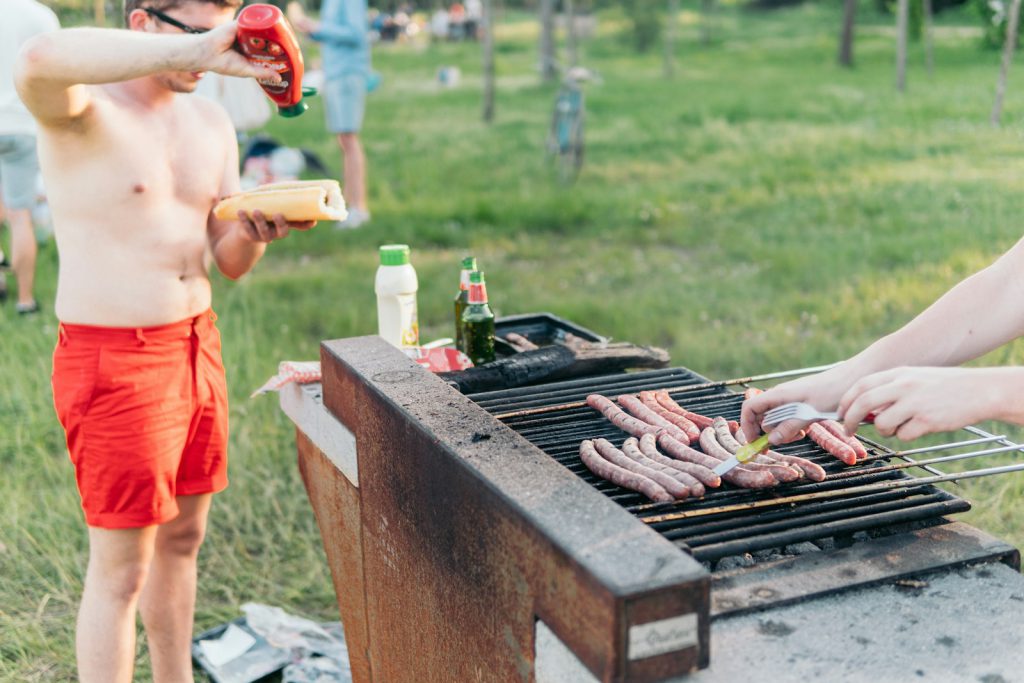
Case Studies: Success Stories of On-site and Off-site BBQ Catering
Examining real-life examples of successful BBQ catering events can provide valuable insights and inspiration.
On-site BBQ Catering Success
Case Study 1: A rustic wedding bbq held at a vineyard utilized on-site BBQ catering to create a memorable dining experience. The live cooking stations, featuring smoked meats and grilled vegetables, added to the event’s charm and ambiance. Guests enjoyed the interactive aspect, and the freshly prepared food received rave reviews.
Case Study 2: A corporate team-building bbq event chose on-site BBQ catering to foster a relaxed and engaging atmosphere. The chefs engaged with the participants, demonstrating grilling techniques and allowing them to customize their meals. The experience enhanced team bonding and left a lasting impression on attendees.
Off-site BBQ Catering Success
Case Study 1: A large-scale charity event opted for off-site BBQ catering to efficiently serve over 500 guests. The food was prepared in a professional kitchen and transported to the venue, ensuring consistent quality and timely service. The streamlined process allowed the organizers to focus on other event aspects, and the food was a highlight of the evening.
Case Study 2: An upscale gala dinner chose off-site BBQ catering to provide gourmet BBQ dishes in a formal setting. The caterers delivered beautifully plated meals that impressed the guests with their presentation and taste. The event’s success showcased how off-site BBQ catering can be adapted to suit elegant and sophisticated occasions.
Tips for Choosing the Right BBQ Catering Option
Making the right decision between on-site and off-site BBQ catering involves careful consideration of various factors.
Assessing Your Event Needs
- Guest Count: Determine the number of guests to assess the feasibility and logistics of each catering option.
- Venue: Evaluate the venue’s facilities, space, and restrictions to identify any limitations for on-site catering.
- Event Goals: Consider the desired guest experience and the overall theme of the event to align with the appropriate catering style.
- Budget: Review your budget to ensure it accommodates the costs associated with either on-site or off-site catering.
- Weather Plan: For outdoor events, have a contingency plan in place to address potential weather disruptions.
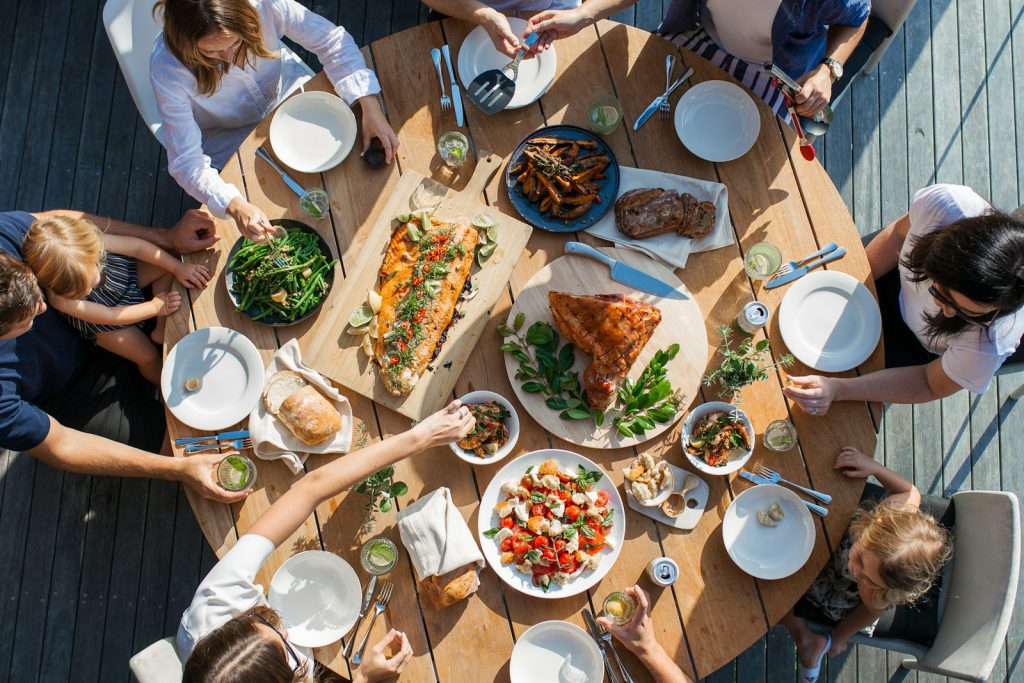
Coordinating with the Caterer: Communication
- Clear Vision: Share your event’s theme, goals, and specific preferences with your caterer to ensure they understand your vision. This includes discussing menu options, dietary restrictions, and any special requests.
- Regular Updates: Maintain regular communication with your caterer leading up to the event. This helps address any changes, confirm details, and ensure everything is on track.
- Point of Contact: Designate a single point of contact for both the event organizers and the catering team to streamline communication and avoid misunderstandings.
Tastings
- Menu Sampling: Arrange a tasting session to sample the proposed menu. This allows you to evaluate the food quality, presentation, and flavors.
- Feedback: Provide constructive feedback during the tasting. Discuss any adjustments or additions you would like to see in the final menu.
- Final Approval: Ensure the final menu is approved well in advance of the event. This includes confirming portion sizes, accompaniments, and serving styles.
Logistics Planning
- Setup and Breakdown: Discuss the setup and breakdown process with your caterer. This includes the timing for setting up cooking stations, serving areas, and cleaning up after the event.
- Equipment Needs: Identify any equipment the caterer will need to bring, such as grills, smokers, serving utensils, and heating elements. Ensure the venue can accommodate these requirements.
- Permits and Regulations: Verify that all necessary permits and health regulations are met. This is especially important for on-site catering, where local health codes may apply.
Timing and Coordination
- Event Schedule: Share the event schedule with your caterer, including key timings for food service. This helps ensure the food is ready and served at the optimal times.
- Transportation: For off-site catering, coordinate the transportation logistics to ensure the food arrives on time and in perfect condition. Discuss the packaging and temperature control measures that will be used.
- Staffing: Confirm the number of catering staff who will be present at the event. This includes chefs, servers, and any additional support staff needed for setup and cleanup.
Customizing your BBQ catering experience can add a personal touch and make your event stand out. Consider incorporating unique elements that reflect your event’s theme and your guests’ preferences.
Menu Options
- Classic BBQ: Offer traditional BBQ favorites such as smoked brisket, ribs, pulled pork, and sausages.
- Fusion BBQ: Incorporate elements from different cuisines, such as Korean BBQ or Mediterranean-inspired dishes.
- Vegetarian and Vegan Options: Provide grilled vegetables, plant-based proteins, and other vegetarian-friendly dishes.
- Interactive Stations: Set up stations where guests can customize their dishes with various sauces, sides, and toppings.
- Desserts: Include BBQ-inspired desserts like grilled fruit, s’mores, or BBQ-flavored ice cream.
Service Styles
- Buffet Style: Guests serve themselves from a selection of dishes, allowing them to choose their favorites.
- Family Style: Dishes are served on large platters for guests to share, creating a communal dining experience.
- Plated Service: Meals are individually plated and served to guests, offering a more formal dining experience.
- Food Truck: Utilize a food truck to serve BBQ dishes, adding a trendy and mobile element to the event.
Health and Safety Considerations
Ensuring the health and safety of your guests is paramount. Both on-site and off-site BBQ catering must adhere to strict standards to provide a safe dining experience.
On-site Catering
- Sanitation: Ensure all cooking and serving areas are kept clean and sanitized.
- Food Handling: Follow proper food handling procedures to prevent contamination.
- Temperature Control: Cook and store food at safe temperatures to prevent foodborne illnesses.
- Allergen Management: Clearly label dishes with potential allergens and provide alternatives for guests with dietary restrictions.
Off-site Catering
- Transportation: Use insulated containers and temperature-controlled vehicles to maintain food quality during transport.
- Reheating: Ensure reheating equipment is available and used properly to maintain safe serving temperatures.
- Food Storage: Store food in appropriate containers to prevent cross-contamination.
- Packaging: Use eco-friendly packaging to minimize environmental impact and provide convenient serving options for guests.
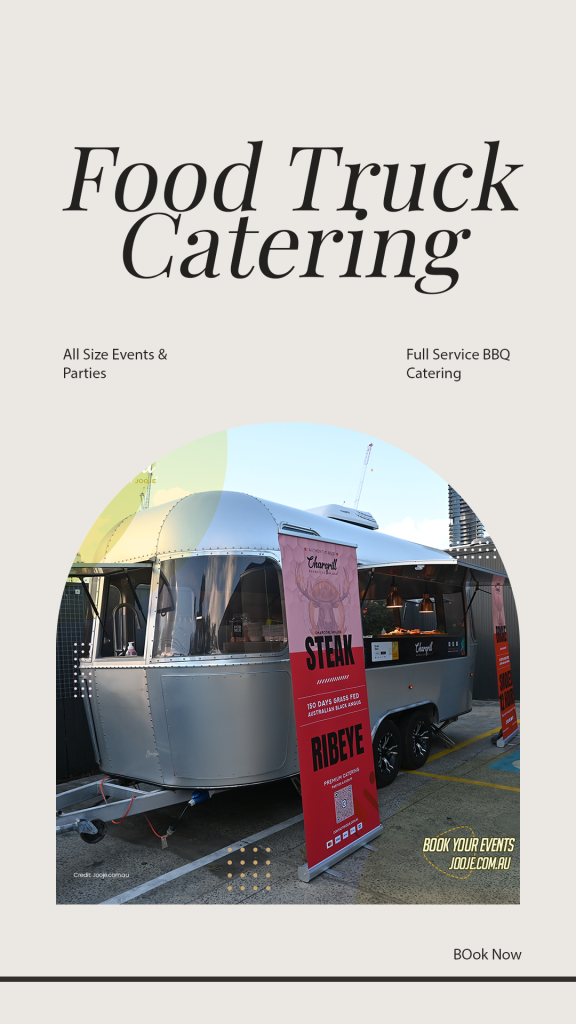
Case Studies: Success Stories of On-site and Off-site BBQ Catering
Examining real-life examples of successful BBQ catering events can provide valuable insights and inspiration.
On-site BBQ Catering Success
Case Study 1: A rustic wedding held at a vineyard utilized on-site BBQ catering to create a memorable dining experience. The live cooking stations, featuring smoked meats and grilled vegetables, added to the event’s charm and ambiance. Guests enjoyed the interactive aspect, and the freshly prepared food received rave reviews.
Case Study 2: A holiday party BBQ catering to foster a relaxed and engaging atmosphere. The chefs engaged with the participants, demonstrating grilling techniques and allowing them to customize their meals. The experience enhanced team bonding and left a lasting impression on attendees.
Off-site BBQ Catering Success
Case Study 1: A large-scale charity event opted for off-site BBQ catering to efficiently serve over 500 guests. The food was prepared in a professional kitchen and transported to the venue, ensuring consistent quality and timely service. The streamlined process allowed the organizers to focus on other event aspects, and the food was a highlight of the evening.
Case Study 2: An upscale gala dinner chose off-site BBQ catering to provide gourmet BBQ dishes in a formal setting. The caterers delivered beautifully plated meals that impressed the guests with their presentation and taste. The event’s success showcased how off-site BBQ catering can be adapted to suit elegant and sophisticated occasions.
Tips for Choosing the Right BBQ Catering Option
Making the right decision between on-site and off-site BBQ catering involves careful consideration of various factors.
Assessing Your Event Needs
- Guest Count: Determine the number of guests to assess the feasibility and logistics of each catering option.
- Venue: Evaluate the venue’s facilities, space, and restrictions to identify any limitations for on-site catering.
- Event Goals: Consider the desired guest experience and the overall theme of the event to align with the appropriate catering style.
- Budget: Review your budget to ensure it accommodates the costs associated with either on-site or off-site catering.
- Weather Plan: For outdoor events, have a contingency plan in place to address potential weather disruptions.
Coordinating with the Caterer
- Communication: Maintain open and clear communication with your caterer to ensure they understand your vision and requirements.
- Tastings: Arrange tastings to sample the menu and provide feedback for any necessary adjustments.
- Logistics Planning: Work closely with the caterer to coordinate setup, transportation, and serving plans. Whether you choose on-site or off-site BBQ catering, effective coordination with your caterer is crucial to ensure a seamless and enjoyable event.
Conclusion
Choosing between on-site and off-site BBQ catering depends on the specific needs and goals of your event. On-site catering offers a fresh, interactive experience with greater customization, while off-site catering provides convenience, consistency, and less dependence on weather conditions. By carefully considering your event’s size, venue, guest preferences, and budget, and by maintaining open communication with your caterer, you can create a memorable BBQ dining experience that delights your guests and meets your expectations.


